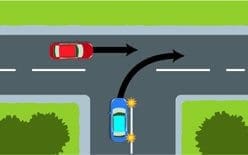While investigating accidents over the years and talking with drivers, many times the driver would state, “I had the right-of-way”. What does this really mean? When we have the “Right-of-Way” does this allow us to proceed without regard for other vehicles?
The FMCSA in their accident counter measure program addresses “Right-of-Way” as follows:
Objective: To prevent accidents by drivers giving “right-of-way” until it is apparent that right-of-way is being given by the other driver.
Description: Generally, the driver who arrives last gives right-of-way to those who were already there. You give right-of-way when entering traffic. You give right-of-way when turning left in front of approaching traffic. You give right-of-way when changing lanes. You move into your intended path or direction only after you are assured you will not conflict with other traffic.
As a Transportation Manager you should ask yourself the following:
- Do my drivers understand the meaning of “right-of-way”?
- Periodically, do you have a qualified person ride with your drivers to evaluate their behavior in right-of-way situations?
- Do you have a realistic scheduling policy that does not encourage drivers to take right-of-way rather than give it?
- Are the drivers aware of the concept of “preventable accident”?
Tips for Drivers Concerning “Right-of-Way”:
- Do not force other drivers to brake or steer because of your obstructive maneuver into their path.
- Assume other drivers will not see you and avoid you when you maneuver into their path.
- Move into your intended path or direction only after you are assured you will not conflict with other traffic.
Originally posted on the Idealease Safety Bulletin.

